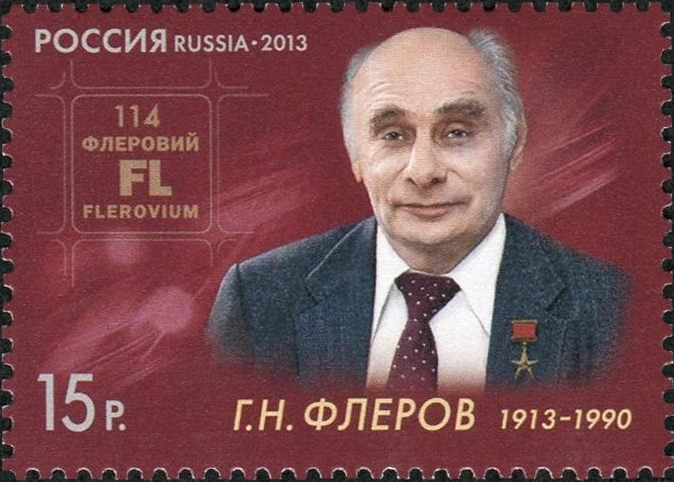Georgy Flerov was a Soviet physicist.
Flerov was born in 1913 in Rostov-on-Don. Flerov studied at the Leningrad Polytechnic Institute and went on to work at the Leningrad Physics and Technology Institute under Igor Kurchatov.
Early Career
In 1940, Flerov along with Kurchatov, Yuli Khariton, and Mikhail Rusinov, submitted a research plan to the Soviet Academy of Sciences, “On the utilization of the energy of uranium fission in a chain reaction.” In conjunction with this, Flerov began to investigate the necessary conditions for a chain reaction in metallic uranium. While working on the project, Kurchatov assigned an experiment to Flerov and Konstantin Petrzhak to observe the flow of neutrons from uranium. They used an ionization chamber, which, much to their surprise, continued to register fission even after they removed the neutron source. The two had discovered spontaneous fission.
World War II
With the German invasion underway, Flerov joined the Soviet volunteer corps and was sent to the Leningrad Air Force Academy to train as an engineer for work on bombers. During his time there, Flerov was given special permission to give a seminar in Kazan, where he pushed for the continuation of the Soviet nuclear program, which had stalled by this point. Physicist Isai Gurevich, who was in attendance, recalled, “The impression was left that this was very serious and well-grounded” and “that work on the uranium project should be renewed.”
Flerov’s sense of urgency to continue atomic research was also evident in a letter he wrote to Kurchatov in 1942. In it, Flerov suggested that a fast-neutron chain reaction could be achieved, providing pages of calculations and even a sketch of an experimental bomb with a gun-type design. As Flerov explained in a letter to a friend, “Perhaps my letter will help this process of the return of the ‘prodigal son’ [Kurchatov].” With no response from Kurchatov, Flerov decided to write a letter to Joseph Stalin himself. Flerov proposed a meeting for nuclear research, and warned that when the West developed a bomb “the results will be so huge that there will be no time to decide who was guilty of the fact that we abandoned this work here in the Union.” It is unclear if Stalin ever saw the letter.
In 1943, Flerov was pulled from the war effort to focus solely on nuclear research. He was part of a Soviet mission to Germany to study the German atomic bomb project, an operation essentially the equivalent of the United States’ Alsos Mission. Soviet scientists at the time were concerned that the NKVD would bring German scientists in to work on the project, but they soon discovered that German project had not advanced very far and that ten top German scientists were interned at Farm Hall in England.
Legacy
Flerov was an important member of the Soviet atomic program and was present for observations at the first Soviet atomic bomb test on August 29, 1949. He was made a full member of the Soviet Academy of Sciences and was the recipient of numerous state awards. The element Flerovium was indirectly named for him: it was discovered at the Flerov Laboratory of Nuclear Reactions of the Joint Institute for Nuclear Research in Dubna, which carries his name.
Flerov died on November 19, 1990, in Moscow.





